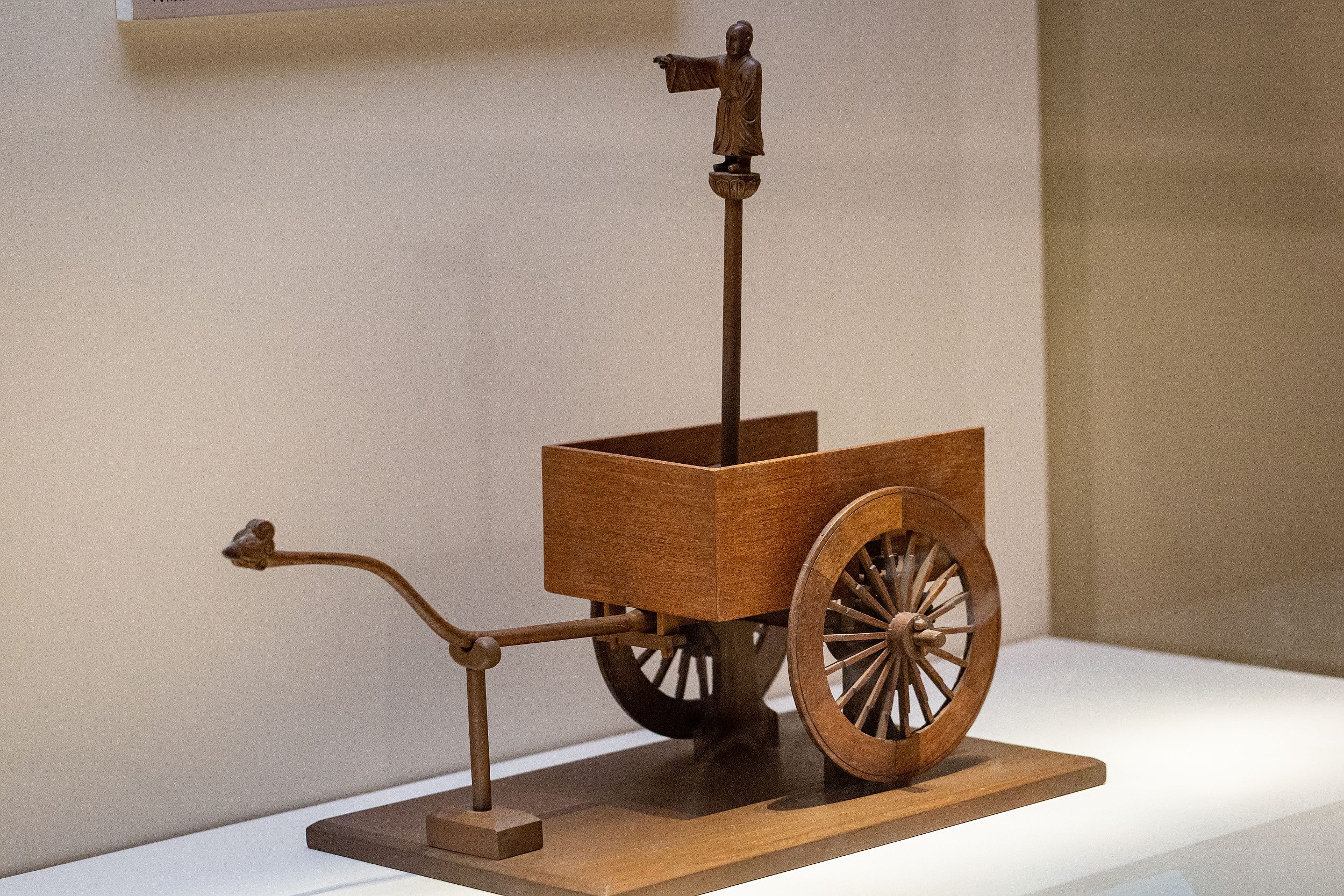Southward-pointing Cart Mechanics

A model of the south-pointing chariot is presented at the National Museum of China. (PHOTO:VCG)
By BI Weizi
The southward-pointing cart was a historic mechanical device, which was invented and used earlier than the compass. More than five thousand years ago, ancient Chinese had utilized it to indicate direction.
Originally, the southward-pointing cart was one of the ceremonial vehicles used by ancient emperors to demonstrate their superiority, and was later used to point south in the battlefield.
According to some extant ancient Chinese texts, the southward-pointing cart was a two-wheeled wagon drawn by horses, usually with a wooden figure standing on top with one arm extending forward. The rotating wheels mechanically operated a gear mechanism to keep the hand pointing south.
The cart had no magnets and did not automatically detect which direction was south. At the beginning of a journey, the hand would point south. Then, as the chariot turned, the mechanism would rotate the hand relative to the body of the cart to counteract the turning and keep the hand pointing in a constant southerly direction. The mechanism thus performed a kind of directional dead reckoning, but which was inherently prone to cumulative error and uncertainty.
Wang Zhenduo, a famous Chinese historian of science and technology, restored and made a model of the south-pointing chariot based on years of research and documentary records, which is now collected in the National Museum of China.
The southward-pointing cart is manufactured according to the automatic clutch gear system, which is similar to the differential gear used in modern automobiles, with the advantages of being smooth and precise. It reflects an outstanding achievement in the practical application of ancient Chinese mechanics.







